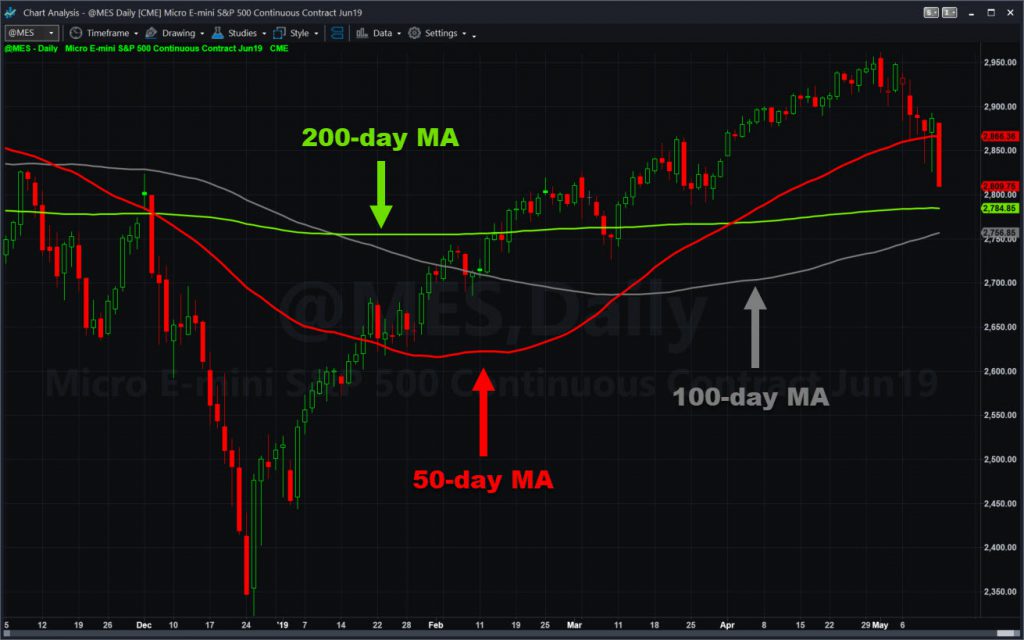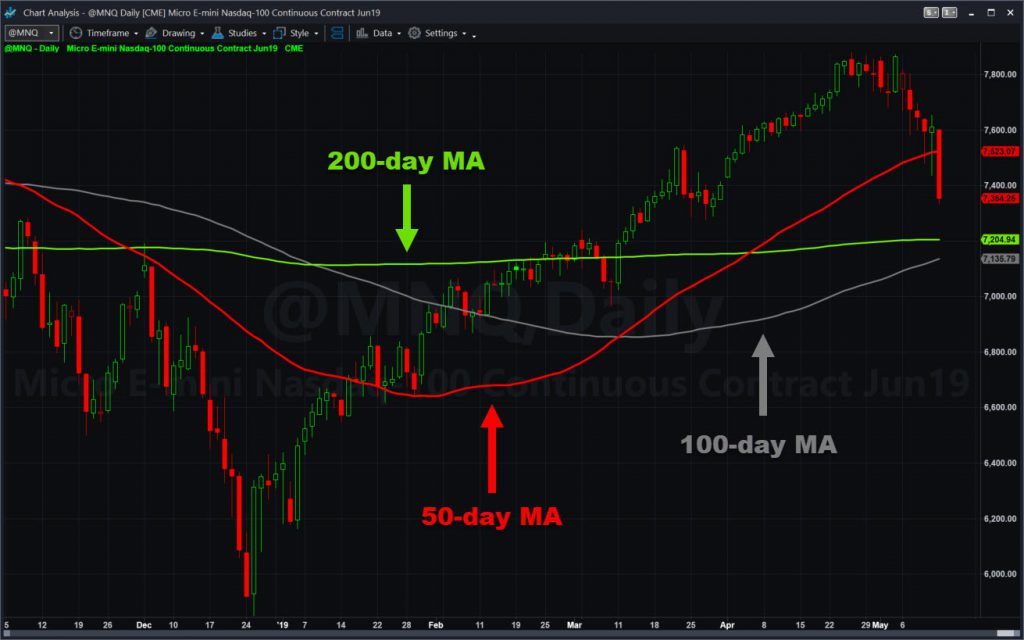Last week was dramatic for stocks but there was also big news in the futures market.
Micro contracts, requiring barely one-tenth the capital of traditional futures, began trading on CME. The new product offers several potential benefits for retail investors — especially during periods of volatility like the present.
Just consider the kind of cash you need on hand to place a trade. Normal S&P 500 E-mini contracts (@ES) have an initial margin requirement of $6,930, while the new Micro E-minis have an initial margin requirement of just $693.
That can be good news for smaller investors with less capital. Now, if you have under $10,000 in your account you can place more than a single S&P 500 trade at a time. Bigger clients can also scale into positions more easily.

The new Micro contracts are available for the most popular major indexes:
- Micro E-mini S&P 500 (@MES), a smaller version of the work-horse E-mini (@ES). This tracks the broadest index of large-cap U.S. equities.
- Micro E-mini Nasdaq-100 (@MNQ), a smaller version of the Nasdaq-100 E-mini (@NQ). This index is heavily concentrated in giant technology stocks like Apple (AAPL), Microsoft (MSFT) and Amazon.com (AMZN).
- Micro E-mini Dow (@MYM), a smaller version of the Mini Dow Jones (@YM). This tracks the 30-member Dow Jones Industrial Average.
- Micro Russell (@M2K), a smaller version of the Mini Russell 2000 (@RTY). This tracks the most widely followed small-cap index. Its members tend to be more economically sensitive than larger companies.
What Are Futures?
Not well-versed in the futures market? Scared about a new kind of advanced product? That’s understandable, but easily overcome.
Futures are different from traditional stocks because they track an index. You don’t own anything. You simply have capital in your account and then go “long” or “short.” Profits or losses then accrue based on the index’s movement.
The capital needed to begin is called the initial margin requirement. It varies for the different indexes.
Each product delivers a different value per underlying move. For example, traditional S&P 500 E-minis (@ES) are worth $50 per index point while the new Micro E-mini S&P 500 are worth $5 per index point. See our Knowledge Center for more.

Another huge difference of futures is the fact they trade virtually around the clock. The market opens on Sunday night and runs through Friday evening, with some brief halts along the way. That can be a big benefit when geopolitical events and news overseas impacts sentiment.
Time to Take Off the ‘Training Wheels’
Some TradeStation clients have used simulated accounts to learn about futures trading. That’s understandable because mistakes are much more expensive when each point in the S&P 500 can cost you $50. After all, last week had the biggest swings of the entire year!
But with Micros, the potential risk shrinks significantly. Now could be the time for those learners to take off the proverbial “training wheels” and get some skin in the game!
Traders who rely heavily on the SPDR S&P 500 ETF (SPY) also might want to consider Micro contracts. They can be used to either take a directional position or to protect holdings against a loss. Two Micro contracts of (@MES) hedge roughly 100 shares of SPY.
In conclusion, individual investors often view futures as confusing and a little scary. But Micro contracts dramatically reduce the cost and make it easier to mange risk. Is it finally time for you to get off the fence and learn this market?























